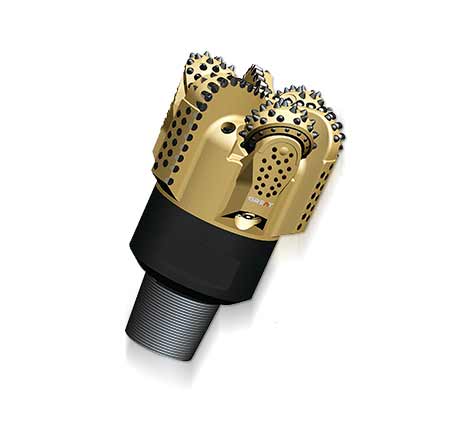Basic Structure and Working Principle of Tooth Bits
(2021年)https://www.greatdrillbit.com/product/steel-tooth-bit.html
Since the first roller cone bit came out in 1909, the tooth bit has been the most widely used in the world. Tri-cone bits are currently the most commonly used bits in rotary drilling operations. This type of drill has different tooth designs and bearing knot types, so it can adapt to various types of formations. In drilling operations, by correctly selecting a roller bit with a suitable structure according to the nature of the drilled formation, a satisfactory drilling speed and bit footage can be obtained.
1. Basic structure of tricone roller bits:
1. Drill body: three pieces of tooth palms are assembled and welded together, and the upper part has a connecting thread.
2. Cone: a cone-shaped metal body composed of a cone body and teeth. There are two types of teeth: milling teeth and insert teeth.
3. Bearing and its oil storage sealing device.
4. Nozzle.
2. Working principle of tooth bits:
When the tooth bit is working at the bottom of the well, the overall rotation of the bit around the bit axis is called revolution, and the three cones rolling on their own axis at the bottom of the well are called rotation. The weight on the drill bit bears on the rock through the teeth, breaking the rock (crushing action). During the rolling process, the cone alternately touches the bottom of the well with single and double teeth, and the position of the center of the cone fluctuates up and down, causing the drill bit to vibrate longitudinally. This longitudinal vibration causes the drill string to continuously compress and stretch, and the lower drill string converts this periodically changing elastic deformation energy into an impact force on the formation through the teeth to break the rock. This impact and crushing action is the main way for tooth bits to break rocks.
In addition to impacting and crushing the bottom hole rock, the roller cone bit also produces a shearing effect on the bottom hole rock. When the roller cone rolls at the bottom of the well, it also produces the sliding of the teeth against the bottom of the well. The sliding of the teeth creates a shearing effect on the bottom of the well rock, scraping the bottom of the well like a scraper bit. The sliding of the teeth is mainly caused by the over-top, secondary cone and shift axis arrangement of the cone. The super-top arrangement of the cones causes the sliding in the tangential direction, and the shifting arrangement of the cones causes the sliding in the axial direction. Generally, drill bits for drilling soft to medium-hard formations have both super-top, compound cone and shift axis; drill bits for drilling medium-hard to hard formations have super-top and compound cones in design; for drilling extremely hard and highly abrasive formations The drill bit often uses a single cone cone, which does not exceed the top and does not shift the axis.
As a supplier of Great Drill Bits, founded in 2010, specialized in processing research of steel and diamond materials, is involved in the R&D, design, production, and sales of petroleum equipment, No-Dig. If you want more information about drill bit factory, please feel free to let us know.
- このできごとのURL:



コメント